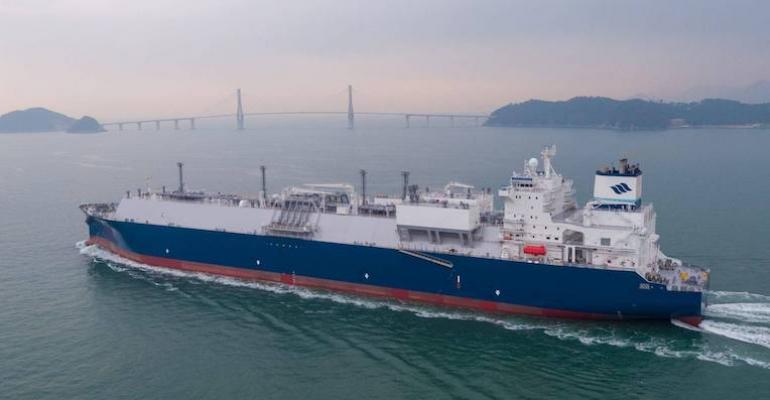In the newly released edition of the Natural Gas Monthly, published by the Energy Information Agency (EIA), part of the US Department of Energy, the changing dynamics of the US export trades are described in detail.
In the publication, the EIA notes: “During the first four months of 2022, the United States exported 74% of its liquefied natural gas (LNG) to Europe, compared with an annual average of 34% last year.” They add that “In 2020 and 2021, Asia had been the main destination for US LNG exports, accounting for almost half of the total exports.” Overall, US LNG exports saw an 18% increase compared with the 2021 .
Exports have annual averaged 11.5bn cubic feet per day (Bcf/d) during the first four months of 2022, aided by the opening of new export facilities he increase in US LNG exports was driven by additional export capacity at Sabine Pass (Train 6) and at nearby Calcasieu Pass, with a facility that came online in early March. The Sabine Pass terminal loaded nearly 110 LNG cargoes during Q1 2022.
Venture Global’s Calcasieu terminal, Louisiana began exporting in March, when five cargoes were loaded - four to Europe and one to Japan.
The move towards European destinations had already begun before the late February invasion of Ukraine, with the huge inventory drawdowns underway in advance of the winter season. The EIA said: “The United States became the largest LNG supplier to the European Union and the United Kingdom in 2021. They said that LNG imports from the United States to the EU and the UK more than tripled during January to April, 2022, compared with 2021, averaging 7.3 Bcf/d.”
The EIA pointed out that: “During the first four months of 2022, US LNG exports to Asia declined by 51%, averaging 2.3 Bcf/d compared with 4.6 Bcf/d (annual average) in 2021.”
Its analysts also alluded to a drop-off in moves to China due to the extremely high Asian LNG prices and pandemic-related lockdowns- they said that, China received only six LNG cargoes from the United States in January–April 2022 (0.2 Bcf/d, compared with 1.2 Bcf/d in 2021). Japan and S Korea also saw declines.

On June 8, there was an explosion and fire at Freeport LNG at Quintana Island, Texas. Reports said that the fire was put out quickly and there were no injuries.
Analysts at Evercore ISI, led by Sean Morgan, had said in a preliminary report that “US LNG export volumes over the last month have averaged 12.57 bcf/d, while Freeport has contributed an average of 2.04 bcf/d. Freeports daily peak volume exported has topped out at 2.10 bcf/day over the last month.”
The Evercore ISI analysts did not claim to have precise information about the extent of the damage and possible downtime. In examining potential implications, they said “However, today’s fire at the Freeport facility could potentially knock out 16% of total US LNG export capacity for an unknown period if the fire damage proves difficult to repair.”
The pricing perspective was also discussed, with Morgan’s team writing that: “a 16% reduction in US LNG exports would probably put downward pressure on Henry Hub pricing this summer. Additionally, Europe which has been particularly reliant on US seaborne exports to help offset risk of disruption to Russian pipeline imports. The fire could result in corresponding upward pressure on the common European gas benchmark, namely Dutch TTF.”
Reader resources:
https://www.eia.gov/todayinenergy/detail.php?id=52659
https://www.energy.gov/fecm/articles/lng-monthly-2022 (lists actual cargoes and vessel names)
Copyright © 2024. All rights reserved. Seatrade, a trading name of Informa Markets (UK) Limited.
Add Seatrade Maritime News to your Google News feed.  |

